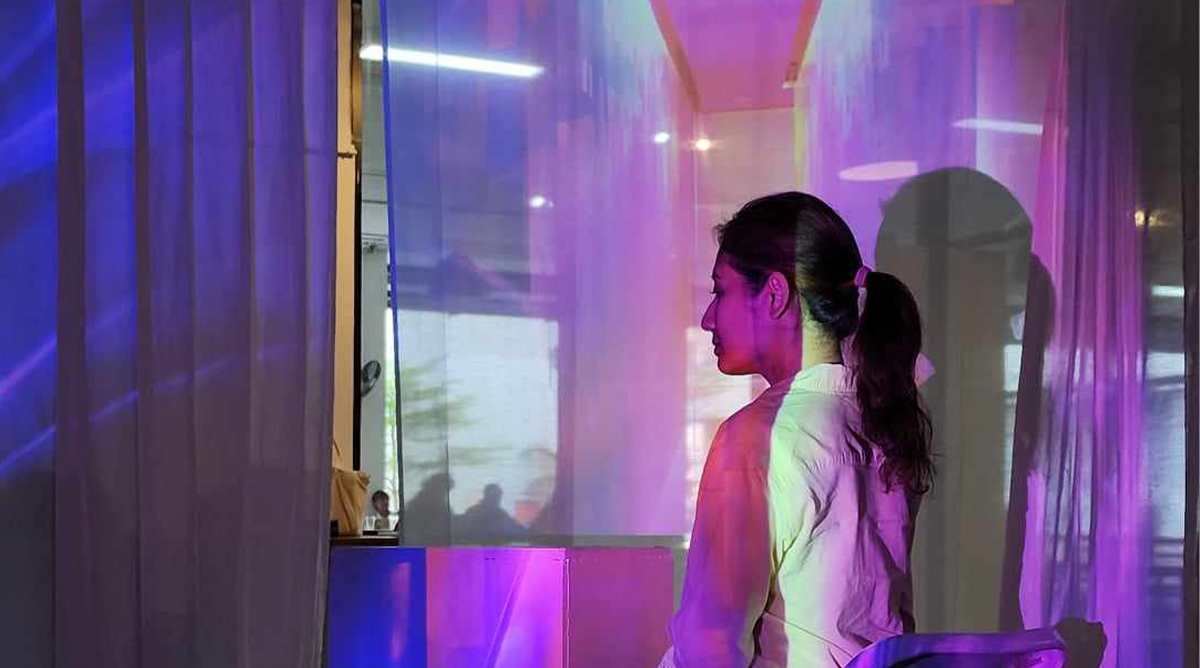
Asst. Prof. Pailin Phokthavi
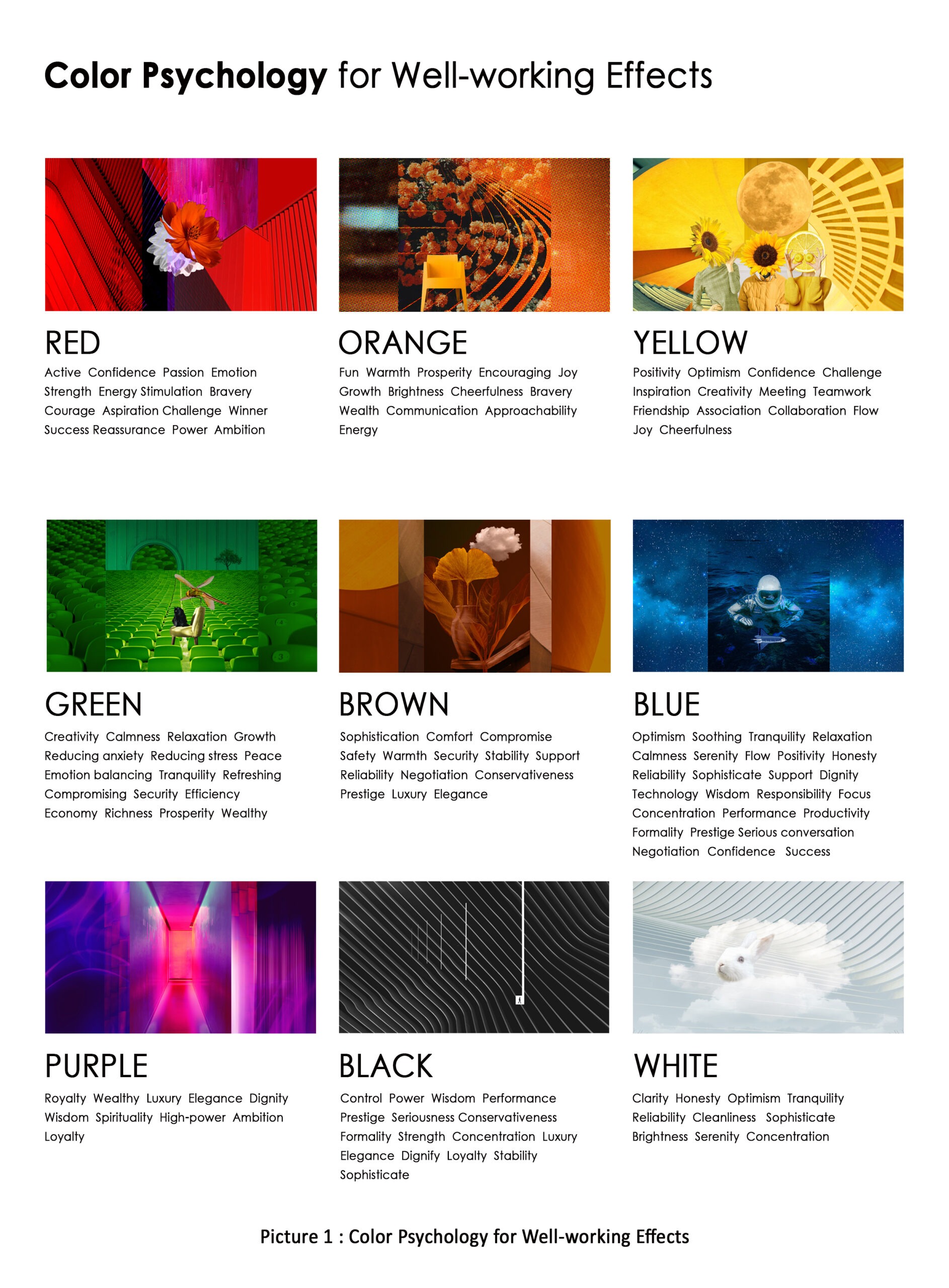
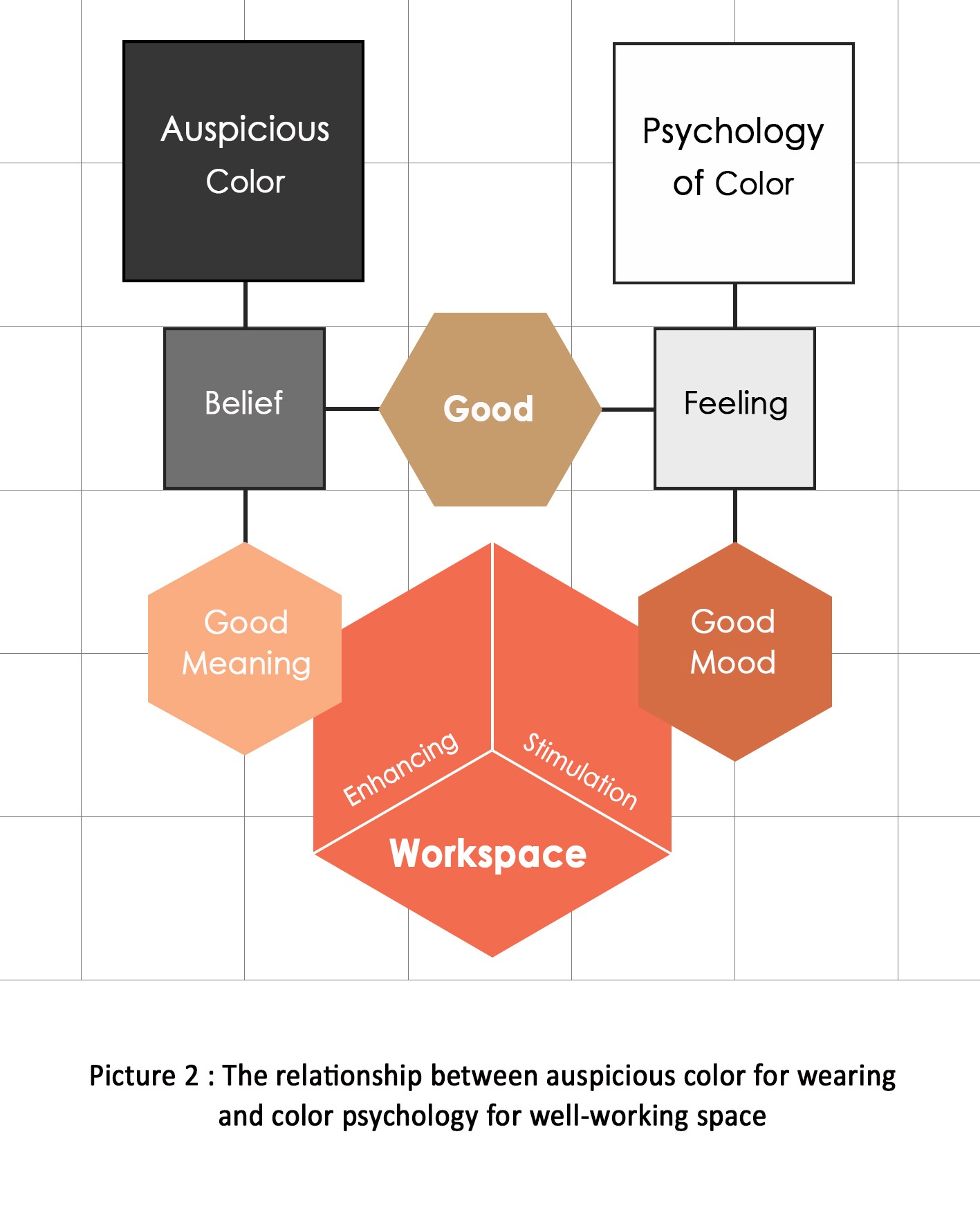
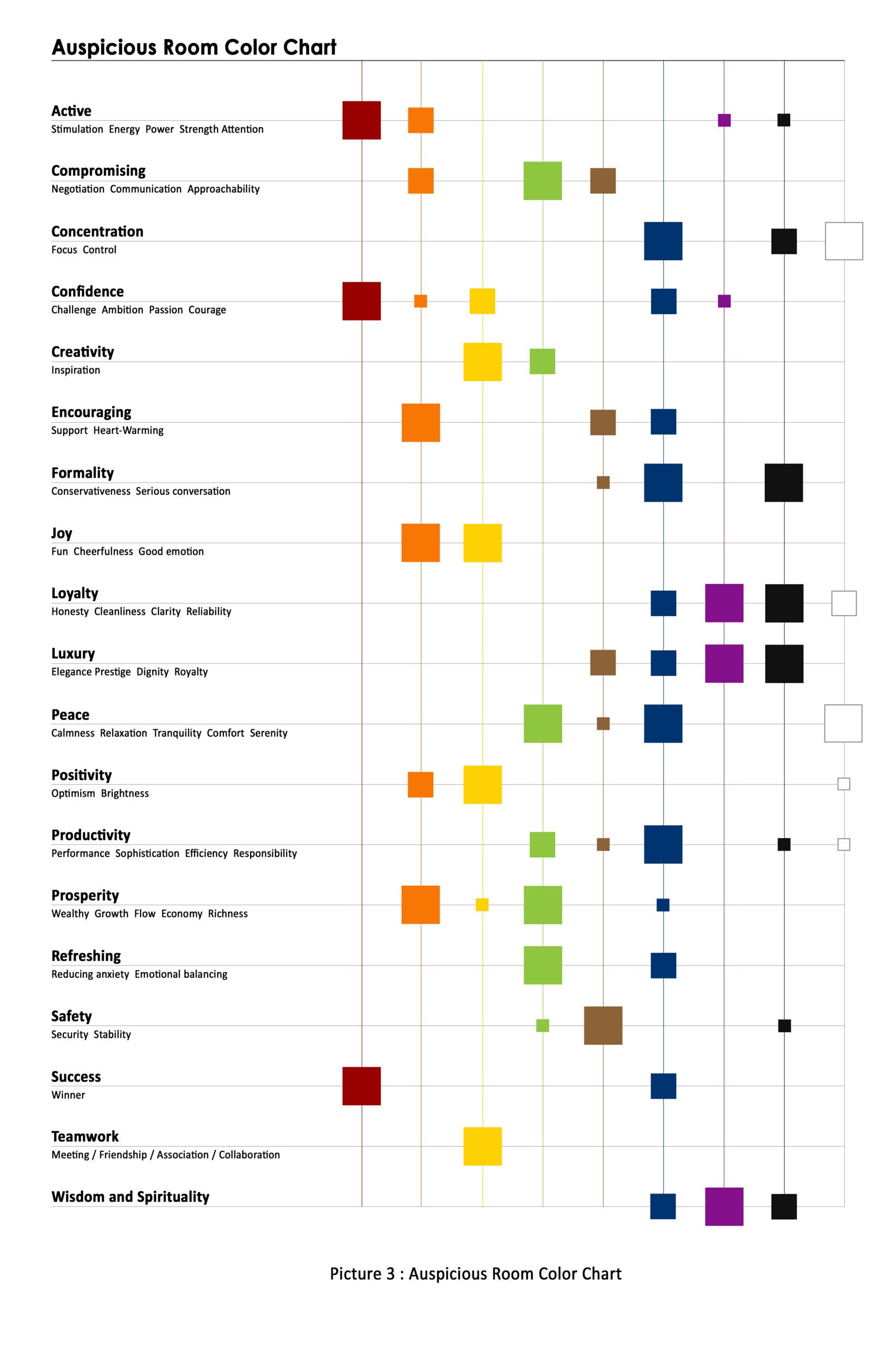
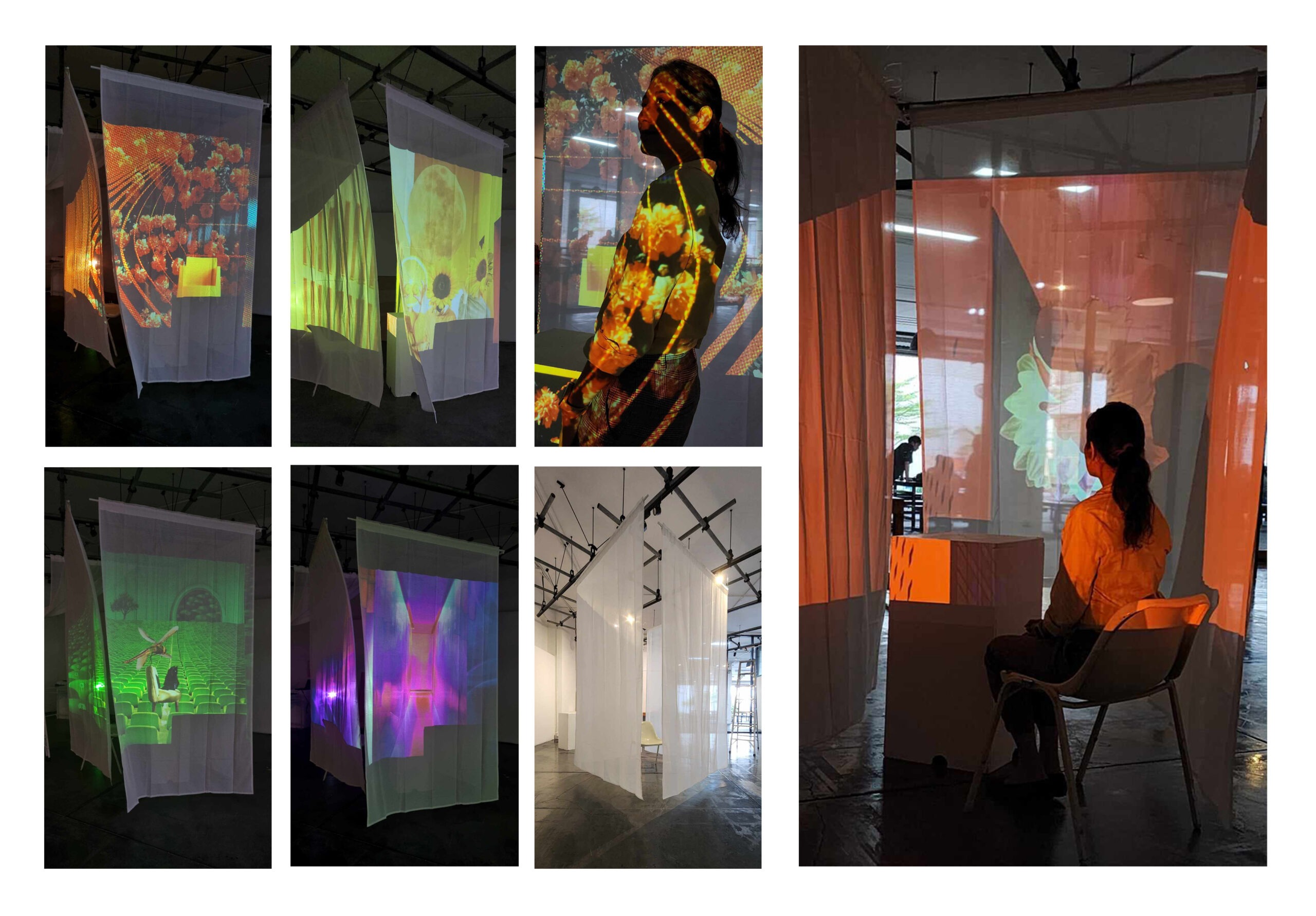
Abstract :
Living in the world where irrational beliefs coexist with technological progress, people begin their day surrounded by both hi-tech gadgets and superstitious objects. As seen in Thailand, the beliefs in auspicious dress colors persist and become popular. Derived from Thai astrology, the auspicious dress color is the determination of daily color to wear to achieve a good fortune. Despite supernatural forces, the auspicious color actually has a deep psychological impact to people?s minds. Wrapping bodies with the colors impacts individuals psychologically, potentially affecting their outlook and behavior.
Recognizing the psychological impact of colors, the innovative spatial artwork proposes integrating the concept of auspicious colors into interior design, which are selected from users to occupy and circulate in a period of time, particularly in workspaces, co-working areas, or classrooms. This concept aims to enhance the psychological qualities of these spaces to promote productivity and well-working.
To apply the design concept of ?auspicious color? to an interior design project such as a workspace, the proposed design allows individuals or teams to select a workroom or workspace finished in different auspicious colors based on their desired emotional states or goals for the day. By surrounding themselves with auspicious colors, users can feel motivated and encouraged, tapping into the psychological effects of color on mood and performance.
To experiment and present the idea of Auspicious Color for Well-working Space,? a cubical curtain space and furniture are set to be as a screen to project the colors on and represent for a work pod. The simulated workspace allows interaction from the viewers to immerse and to be encapsulated in a moment in the space surrounded by auspicious color. Each color stands for the color in each room which users in workspace are able to choose. Projected on artwork, the colors will shift continuously so that the viewers can perceive the change in feeling from the psychological effects of each color.
Objectives :
1. To study psychological effects from colors in workspace influencing productivity and creating well-working space.
2. To build up and propose an innovative design concept for workspace, formed by the knowledge of applying auspicious colors for dress to auspicious color for interior space through the color psychology.
3. To create an interactive spatial artwork simulating a workspace depicting its influences from variation of colors and their psychology qualities, and to engage the viewers to participate in sensing the color psychological effects in the spatial artwork.
Conceptual Framework :
Auspicious Color for Wearing
The auspicious color, very popular among Thai people, is deeply ingrained in cultural. In history, the spirit anchor was needed to cope with fear, and to understand the over-control natural phenomena (Mandal, 2018). ?Luck is intangible. Thus, it must be associated with tangible things.? (????? ?????????, 2564). This belief extends to clothing choices. Uniquely expressing themselves through color, humans are the only species that wear colors, shred and refinish bodies with new colors (Haller, 2019). The colors we wear affect us physically and mentally, influencing perceptions and emotions. (Boonyatud, 2022).
Color Psychology for Well-working Space
Color is a universal language. Color shapes our experiences, evoking emotions and behavior (Haller, 2019). In interior spaces, color choices significantly affect users’ well-being and productivity. Research suggests that workplaces with suitable colors foster a positive atmosphere and enhanced performance. Therefore, from the analysis of color psychology, providing right color choices for specific working activity space can lead users? behaviors and abilities to preferable ways. The colors have been analyzed and listed out their positive effects on well-working, as shown in picture 1.
Auspicious Color for Well-working Space
Comparing superstition with psychological principles reveals parallels in promoting well-being and performance. Studies show that wearing colors, as well as surrounded by colors, influence lives physically and psychologically (Boonyatud, 2022). Thus, auspicious colors align with psychological theories of self-perception and performance. พัชชา เฮงษฎีกุล. (2564)
Implementing auspicious colors in space design, the concept of auspicious colors extends beyond personal attire to workplace, where it can enhance productivity and well-being. This concept encourages flexibility, allowing employees to choose workspaces based on color preferences and psychological needs. The concept can be developed and applied for further interior workspace design projects (See diagram in Picture 2).
Allowed to select their workspace, the users will be guided by the auspicious room color chart (See picture 3). They may have to consider psychological effects of colors in the chart, depends on the activities, interaction, situation, or work atmosphere required on the day. To provide options makes employees work more efficiently (Boonyatud, 2022).
Process / Methodology :
1. Set the statement and project direction
Set the idea and the statement from the inspired background questioned from observation of people and their social belief of ?auspicious color? in daily life. Set the project direction to express and present the concept.
2. Research analysis and develop conceptual framework
Research and study for related information and knowledge about ?auspicious color and color psychology in workspace design.? Analyze the relationships of the essences of the issues. Develop the conceptual framework of the topic.
3. Create an interactive spatial artwork simulating a workspace and the presentation
3.1. Create Digital collage art of 9 auspicious color mood images in 1920p x 1080p (Using royalty free images for composing all collage art). The artwork represents the color in each workspace and its psychological effects.
3.2. Set the cubical curtain spatial as a simulated scene for workspace, working as a screen for color projection.
3.3. Using the information from the analysis of the auspicious color for room, make the ?Auspicious Room Color? guide chart.
4. Exhibit the interactive spatial artwork for viewers to participate
Techniques and Materials :
Materials:
Part 1: Auspicious Color Room
1. A cubical curtain space – 4 white curtains and furniture combined to 145 cm x 145 cm x 250 cm simulated work pod space as a screen for color images projection.
2. Digital collage art of 9 auspicious color mood images created in 1920p x1080p (Note: royalty free images are used for composing the collage artwork)
Part 2: Auspicious Room Color Chart
A printed infographic guide chart mounted on board or framed to present the ?Auspicious Room Color.?
Technique:
Mix media: Digital collage art of color mood images mapped on an interactive space. (The viewers are allowed to participate in the interactive process, experimenting, and observing the phenomenal of space simultaneously).
Result / Conclusion :
When people interact with an interior, they associate it with some meaning that become vital to their experience. Colors, therefore, have a fundamental impact on interiors because they communicate the meaning. The purpose of a space and the purpose of color must collaborate. (Ulusoy, Olgunturk, and Aslanogu, 2020). Many researches indicate that specific colors can enhance work performance, supporting the notion that the power to motivate lives psychologically rather than supernaturally. While auspicious colors were once associated with supernatural beliefs, contemporary understanding acknowledges their influence through color psychology and theory.
In the exhibition, by projecting the selected auspicious room colors onto a blank cubicle space, a simulated scene of a work pod where the viewers can interact with the colors and observe how the colors wrapping around the bodies affect the mood for working space. This study and the interactive spatial art piece aim to propose an innovative design concept applied for further workspace design projects creatively.
In summary, the integration of auspicious colors into interior design offers a tangible way to leverage color psychology for enhancing workspace environments. By empowering users to select colors that align with their goals and emotional states, this approach aims to foster a conducive atmosphere for productivity and well-being. Through this innovative blend of tradition and modern psychology, spaces can be optimized to support individuals in achieving their full potential.
References :
References
คณะจิตวิทยา จุฬาลงกรณ์มหาวิทยาลัย. (2018). สีในแง่จิตวิทยา – Psychological Aspects of Color. Retrieved January 2024 from https://www.psy.chula.ac.th/th/feature-articles/psychological-aspects-of-color
พัชชา เฮงษฎีกุล. (2564) จริงหรืองมงาย? วิเคราะห์พลังของตารางสีมงคลประจำวัน. On-line. Retrieved January 2024 from https://www.krungsri.com/th/plearn-plearn/power-of-color?fbclid=IwAR3Fz0XFkPDGbFeKVPCHMNPmSZFljHkZMEcBKG7GVMFblAUfLJ0jlGIN0nk
Boonyatud, Pumi. (2022). สีมงคลของ HR: เลือกสีเสื้อ ใช้สีห้องอย่างไรให้ถูกใจคนทำงาน สายมูต้องอ่าน! Retrieved March 2024 from https://th.hrnote.asia/orgdevelopment/220622-colors-psychology/?fbclid=IwAR2KEJskxdpjhb6gm9JSAZmVDtZrEPhW1MdeC6Q8DcD3_nx6aGVahgMFe-4
Butterworth, Diane. The Psychology of Colour in Office Design. Retrieved January 2024 from https://dianebutterworth.com/articles/the-psychology-of-colour-in-office-design/
Cao, Lilly. (2022). How Color Affects Architecture. On-line. Retrieved January 2024 from https://www.archdaily.com/930266/how-color-affects-architecture
Haller, Karen. (2019). The Little Book of Colour: How to Use the Psychology of Colour to Transform Your Life. UK: Penguin Random House.
Interia.com. (n.d.). Using Colour Psychology in Office Design. On-line. Retrieved January 2024 from https://interia.com.au/using-colour-psychology-in-office-design/
Jain, Savvy and Avitesh Vaishnavi Nayak. (2023) Impact of Color on Human Behavior Case – Interior Space. International Journal of Emerging Research in Engineering, Science, and Management, 2(1), 33-37. https://doi.org/10.58482/ijeresm.v2i1.6
Mandal, Fatik Baran. (2018). Superstitious: A Culturally Transmitted Human Behavior. International Journal of Psychology and Behavioral Sciences. 8(4), 65-69. https://doi.org/10.5923/j.ijpbs.20180804.02
T2B Interiors. (2021). The Psychology of Color in Office Design: How Colors Affect Employee. On-line. Retrieved January 2024 from https://t2binteriors.com/the-psychology-of-color-in-office-design-how-colors-affect-employees/
Ulusoy B, Olguntürk N, Aslanoglu R. (2020) Colour semantics in residential interior architecture on different interior types. Color Res Appl. 2020;45:941–952. https://doi.org/10.1002/col.22519
Royalty free images for composing the collage artworks retrieved from www.unsplash.com